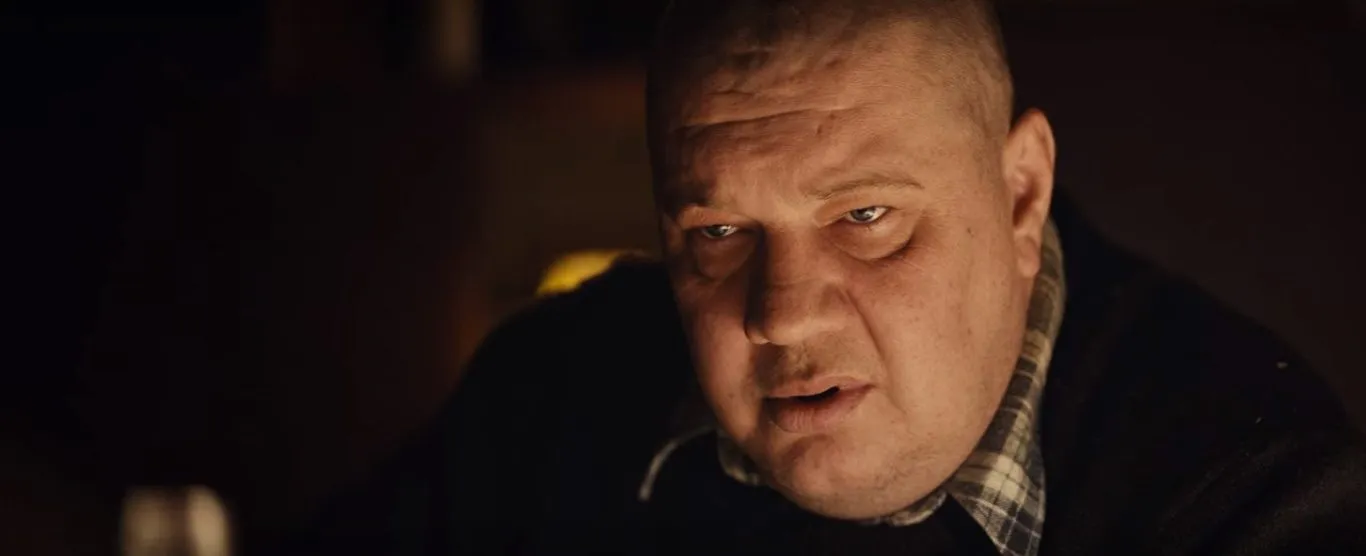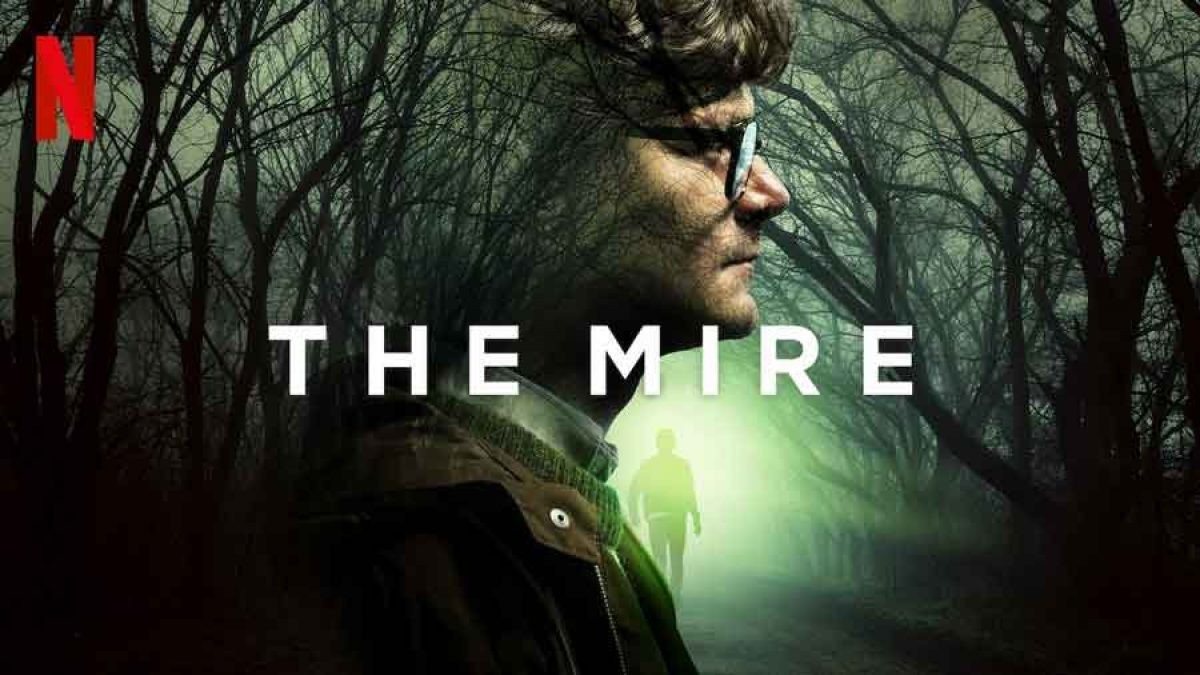Set in the 1980s, The Mire introduces viewers to a seemingly peaceful small town that is shaken when two individuals are found brutally murdered in a nearby forest. The victims are Lidia, a prostitute, and Mr. Grochowiak, a well-known figure who served as Chairman of the Socialist Youth Board.
When the crime is discovered, the local newspaper The Courier assigns two journalists, Piotr and Witold, to cover the case. At the crime scene, the town’s prosecutor informs them that Lidia’s boyfriend, Wozniak, has confessed to the murders and has been placed in a mental institution.

Piotr, an ambitious journalist eager to prove himself, finds the explanation unsatisfactory and decides to dig deeper. His partner, Witold, who is preparing to leave town in search of a mysterious woman, gets drawn into another tragic event—this time involving two students, Justyna and Karol.
Their deaths appear to be suicide, but as Witold investigates, he uncovers disturbing details about the chairman’s history of preying on schoolgirls in exchange for money. Justyna, one of his victims, had an affair with Karol, a withdrawn and artistic boy.
Their relationship ended in despair, leaving both deeply heartbroken. As Witold confronts Justyna’s grieving father, Kazik, he suspects that the man may have taken justice into his own hands by killing the chairman.
However, Kazik denies this, admitting that while he had wanted to kill him, someone else got to the chairman first. Meanwhile, Piotr continues his investigation and visits Lidia’s residence, where he encounters her landlord—a butcher whose sinister demeanor raises suspicions.
Hoping to uncover the truth, Piotr hides in the butcher’s van, but his plan takes a dark turn when the ruthless police investigator Kulik apprehends the butcher. Hidden from view, Piotr watches in horror as Kulik and his accomplice hang the butcher and place his fingerprints on a knife, framing him for the murders.
When Kulik later visits the butcher’s house pretending to be unaware of his fate, Piotr seizes the opportunity to confront him in front of other officers.
The Mire Ending: Who is Else Koepke?
A tense moment unfolds as Kulik, realizing the situation is slipping from his grasp, begins shooting, killing the Sergeant instantly and injuring Witold. In the chaos, a fellow officer fires at Kulik, taking him down. Shaken by what he has witnessed, Piotr decides to leave town with his pregnant wife, Teresa.
However, questions about Kulik’s true motives still linger. Determined to get answers, Piotr visits Helena, the chairman’s widow, and discovers a knife in her possession—one of the weapons Kulik had seized earlier.
Helena explains that Kulik had helped free her from her abusive husband, which complicates the case further. Just then, a powerful government prosecutor, who appears to be part of the conspiracy, intervenes and orders Piotr to walk away.
Piotr later returns to the forest where the bodies were found, while Witold removes a painting by Else Koepke—a German painter he has been obsessed with. The season ends with Piotr gazing at an eerie spot in the forest, while Witold fixes his stare on the painting.
Their expressions suggest that they have discovered something crucial, but the audience is left in suspense. Else Koepke remains an enigma throughout the series, though bits and pieces of her story emerge. She was a German girl whom Witold fell in love with during the final months of World War II.
As the war came to an end, many German residents of the town were sent to a makeshift camp, where starvation, disease, and violence led to mass deaths. Else was among those imprisoned, and Witold eventually lost all trace of her.
When the few survivors were transferred westward to Germany, he believed she was among them. Years later, he came across a painting of a familiar-looking forest—one resembling the place where she had been held. Recognizing her signature, Witold became determined to track her down, convinced that she was still alive.
There are also eerie carvings on trees in the forest, which Piotr notices during his investigation. These carvings include names or initials, followed by the Roman numeral XII (12) and the number 45, likely referencing the year 1945, when the war ended.
One particular carving, EK XII 45, strongly suggests that Else herself made it, further deepening the mystery.
What is Going on in Gronty Forest?
The town’s forest holds dark secrets, with many characters hinting at its ominous nature. Some claim that an eerie glow appears there, while others believe that the forest has a way of driving people apart.
Strange occurrences within its borders suggest that many of the town’s disturbing mysteries originate from this very place. The bodies of the chairman and Lidia were found there, and it was also where Karol left his love poems—clues that led Witold to dig deeper into the case.
There is also a moment where Piotr, stranded in the forest, notices mysterious lights and mist, raising speculation that supernatural forces may be at play. Later, the full horror of the forest is revealed—it was once the site of a concentration camp, and the land is essentially a mass grave.
A chilling detail emerges when locals joke that no one in the town is a true native, not even its long-time residents. This grim statement gains new meaning when it is revealed that the original inhabitants were either executed or perished under inhumane conditions in the camp before being buried in the forest.
Who Killed Chairman Grochowiak and the Prostitute?
As suspicions shift from one person to another, the truth finally comes to light—Kulik, the corrupt police investigator, is responsible for both murders. Though the killings are not shown on screen, the fact that Kulik possesses the actual murder weapon—a bayonet knife—proves his guilt.

To further cement this, he deliberately places the butcher’s fingerprints on the weapon, framing him for the crimes. When Piotr confronts Helena, she admits that she only wants Kulik to get rid of her husband, not the prostitute. However, her confession leaves lingering doubts.
Why would Kulik go to such extremes just to free Helena from her marriage? Her revelation suggests that there may have been additional motives at play. It is possible that Kulik was acting on orders from the town prosecutor, who appears to be well aware of the entire cover-up.
The final twist raises even more questions. Many of the town’s powerful figures, including the prosecutor, the late Sergeant, and even the newspaper’s managing editor, seem to be guarding a long-buried secret about the town’s history.
There is a possibility that the chairman had knowledge of this dark past and threatened to expose it, leading to his execution. If that is the case, then his murder was not merely about personal revenge or justice—it was part of a much larger conspiracy.



